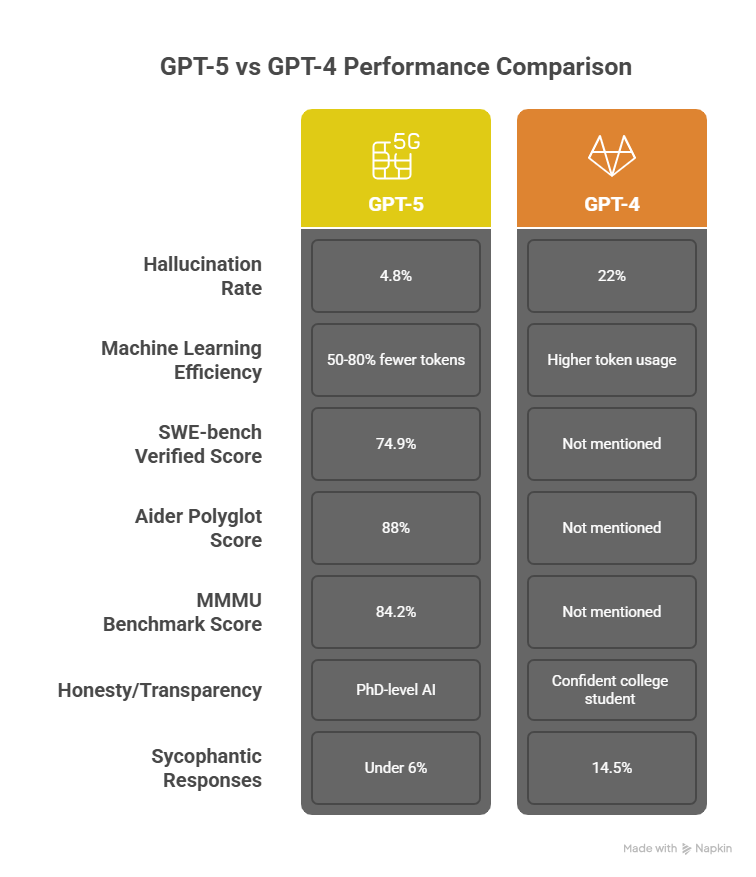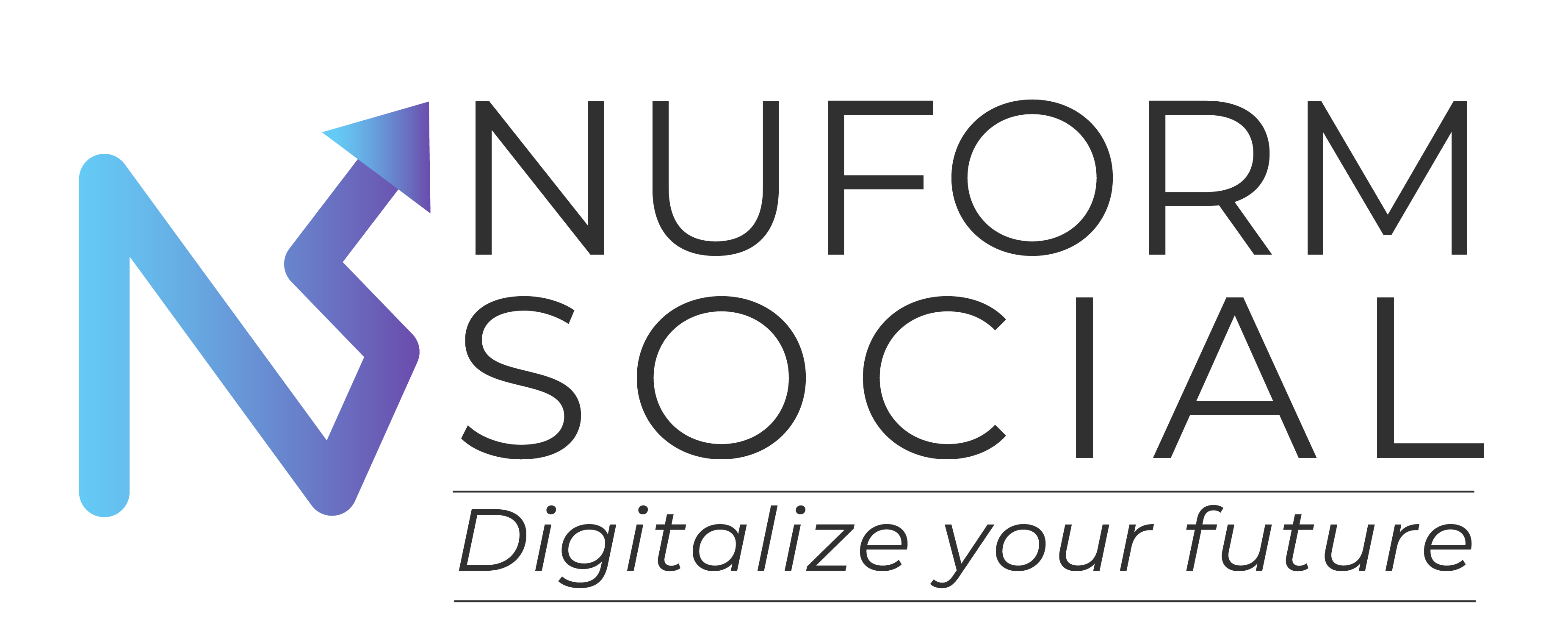How ChatGPT-5 is Revolutionizing AI: The Most Advanced Model Yet
ChatGPT-5, the most advanced AI model yet, is redefining the AI revolution with breakthroughs in NLP, productivity tools, and industry applications. From boosting business efficiency to inspiring creative innovation, this next-gen AI showcases the future of AI with unmatched performance, evolving language capabilities, and transformative generative AI models in 2025.

By Nitin Banik
The AI Revolution Just Got Real
Remember when talking to a computer felt like yelling at a brick wall? You’d type a question, cross your fingers and hope the reply was more “helpful” than “huh?” Those days are officially over because the AI revolution with ChatGPT-5 is unlike anything we’ve seen before.
August 2025 marks the arrival of OpenAI’s latest AI model, a leap that feels less like an upgrade and more like stepping into the future of generative AI models 2025. This isn’t just faster responses or a new set of shiny features it’s a most advanced AI model with ChatGPT-5 NLP improvements that deliver “PhD-level expertise” in your pocket.
Built on years of AI language model evolution, GPT-5 blends unmatched accuracy with deeper reasoning and broader context understanding. The result? You’re not just chatting with software, you’re working with a partner capable of delivering human-level insight, driving AI breakthroughs 2025 and setting a new benchmark for next-gen AI models.
What Makes ChatGPT-5 Different from Every Other AI
If you’re wondering why the buzz around ChatGPT-5 feels louder than any AI release before it, it’s because this AI revolution with ChatGPT-5 represents a leap unlike anything before. The numbers speak for themselves: 80% fewer hallucinations, 45% more accurate answers and reasoning capabilities that rival human experts. This isn’t just a faster chatbot, it’s the most advanced AI model to date, setting a new benchmark in the AI language model evolution.
One of the most game-changing features in this OpenAI latest AI model is its unified intelligence approach. In the past, you might have had to switch between next-gen AI models, one for speed, another for reasoning and maybe a separate tool for code or creative work. Now? ChatGPT-5 performance adapts automatically. Whether you need quick facts, deep analysis or creative brainstorming, it adjusts its depth and tone in real time. No toggles, no guesswork.
It’s not just about text, either. As a truly multimodal system, ChatGPT-5 handles words, images and even structured data in one conversation. That means it can read your chart, explain it in plain English and then generate a matching infographic all without skipping a beat. These ChatGPT-5 NLP improvements bring us closer to the future of AI with ChatGPT-5, where generative capabilities go far beyond text.
And sometimes, the magic feels almost playful. A developer once asked GPT-5 to build a cookie-themed Tetris game. Within seconds, it delivered a fully functional, styled web app a perfect showcase of ChatGPT-5 applications in intelligent automation and creative problem-solving. These aren’t just theoretical AI-powered productivity tools; they’re real, tangible ChatGPT-5 AI use cases changing what’s possible in everyday workflows from complex ChatGPT-5 for business scenarios to weekend coding experiments.
The Game-Changing Features That Put GPT-5 Ahead
Tired of AI that hallucinates facts or gets hopelessly confused by complex instructions? ChatGPT-5 is designed to end that frustration once and for all. It doesn’t just respond to it, it also understands reasons and adapts in ways that feel more like talking to a trusted colleague than interacting with a machine.
One of the biggest leaps in GPT-5 vs GPT-4 is its AI reasoning capabilities. Thanks to advanced internal “chain-of-thought” processing, it can break down multi-step problems, follow complex context and deliver answers that stick to the facts. No more rephrasing your question three times, just to get clarity.
Another standout? AI personality customization. You can choose from personas like Cynic, Robot, Listener or Nerd tailoring not just the content but the tone of your interaction. Want blunt feedback? Done. Need empathetic conversation? Easy. Prefer pure data-driven insights? Consider it handled.
Safety has also taken a front seat. With its new safe AI completions feature, GPT-5 can address sensitive topics without producing harmful outputs all while avoiding those frustrating “Sorry, I can’t help with that” dead ends.
Its unified intelligence model means no more deciding between “fast mode” or “deep mode.” GPT-5 dynamically shifts between quick, clear answers and complex, detailed reasoning, delivering the right level of depth automatically.
The real-world applications are staggering. Picture GPT-5 for healthcare translating medical documents with accuracy and compliance in multiple languages. Or imagine its advanced coding assistance debugging your code, explaining the fix in plain English and even improving efficiency. On the productivity side, GPT-5 integrates with Gmail and Calendar to organize your schedule, draft emails and anticipate deadlines all while functioning as a conversational AI partner you can truly rely on.
This isn’t just another iteration in AI productivity tools, it’s a complete redefinition of what an intelligent assistant can be.
Technical Breakthroughs That Matter
While ChatGPT-5’s features are headline-worthy, its true power comes from the AI benchmark performance numbers and these aren’t marketing spin. They’re hard, measurable gains that put it ahead of every other large language model in real-world capability.
First, hallucination reduction. GPT-4 carried a 22% factual error rate, meaning it produced incorrect information more than one in five times. GPT-5 slashes that to just 4.8%, turning it from a “helpful assistant” into a trusted expert you can depend on for professional work.
Its machine learning efficiency is equally impressive. Complex reasoning now takes 50–80% fewer tokens, making GPT-5 faster, more cost-effective and easier to scale across enterprise deployments.
Developers will feel the leap immediately. In GPT-5 coding capabilities, it scores 74.9% on SWE-bench Verified and 88% on Aider Polyglot, which tests multilingual programming skills. That’s not an incremental bump it’s a generational shift in AI-assisted programming reliability.
On the multimodal front, GPT-5 excels with an 84.2% score on the MMMU benchmark, proving it can seamlessly process and reason across text, images and structured data. This level of multimodal AI understanding makes it a single tool for analysis, design and cross-format communication.
And it’s not just more accurate it’s more honest. If GPT-4 was like a confident college student who guessed when unsure, GPT-5 is a PhD-level AI that admits what it doesn’t know, delivering transparency and reducing misleading outputs.
Even subtle behavior upgrades matter. GPT-4 gave “sycophantic” responses automatic agreement in 14.5% of interactions. GPT-5 has cut that to under 6%, meaning you get thoughtful, critical feedback instead of blind agreement.
These aren’t just technical bragging rights. They’re the breakthroughs that make GPT-5 a versatile AI partner one that’s faster, more precise and better suited to powering research, enterprise tools and real-world AI applications with unmatched consistency.

Real-World Impact and User Experiences
Early GPT-5 user feedback makes one thing clear this isn’t just a win in AI benchmark tests, it’s changing how businesses operate. Take biotech giant Amgen, which reports major AI accuracy improvements in scientific workflows. Fewer rechecks; faster document processing and more consistent results have turned GPT-5 into a key productivity driver in high-stakes industries. This kind of enterprise AI adoption underscores its value where precision truly matters.
Of course, the reception isn’t all glowing. Some users miss GPT-4o’s creativity and lightning-fast pace, particularly during freeform brainstorming. One developer summed it up after more than 20 hours of hands-on testing: “Results vary Claude 4 sometimes performs better subjectively.” This AI model comparison shows that GPT-5’s strength lies in reasoning depth and factual reliability, but it may not be every team’s first choice for speed or playful ideation.
In practice, GPT-5 can feel revolutionary for real-world AI applications in law, medicine and complex coding. For casual creative writing or quick one-off queries, the shift feels more evolutionary than transformational.
What’s undeniable is that GPT-5 has sparked a new conversation: it’s no longer about if AI fits into your workflow, it’s about choosing the right model for the right task.
FAQ: Your Burning ChatGPT-5 Questions Answered
Q: Is ChatGPT-5 really free to use?
A: Yes, with limits. Free users get a set number of daily messages, while ChatGPT Plus subscribers enjoy unlimited access, faster responses and the full suite of advanced GPT-5 features.
Q: How does GPT-5 compare to Claude or Gemini?
A: In most AI model comparison benchmarks, OpenAI reports that GPT-5 leads in accuracy, reasoning and multimodal AI understanding. Still, competition from Claude and Gemini is intense and some users prefer them for niche tasks like rapid ideation or unique writing styles.
Q: Can I still access older models?
A: For most users, GPT-5 has replaced the model picker. Its unified intelligence automatically adapts between quick answers and deep reasoning, eliminating the need to switch modes manually.
Q: What about privacy with Gmail integration?
A: GPT-5’s Gmail and Calendar features are seeing strong enterprise AI adoption, but privacy concerns remain. OpenAI assures secure data handling, yet reviewing their policy is wise if you handle sensitive information.
Q: Can GPT-5 handle image and data analysis in the same session?
A: Absolutely. Thanks to its multimodal AI capabilities, GPT-5 can process text, images, and structured data seamlessly. You can upload a chart, have it explained in plain English, and even request a matching infographic—all in one conversation.
Q: Does GPT-5 work offline?
A: No. GPT-5 operates entirely in the cloud, ensuring it can access the latest AI benchmark performance improvements. However, this also means you’ll need an internet connection to use it.
Q: Is GPT-5 suitable for legal or medical advice?
A: GPT-5 shows remarkable accuracy in specialized fields, but it’s not a licensed professional. For legal or medical decisions, it should be used as a research and drafting tool not as a replacement for expert consultation.
Q: How customizable is GPT-5’s personality?
A: Very. Users can select from preset personas like Cynic, Listener, or Nerd, or fine-tune custom instructions to match their preferred tone, style, and depth of reasoning.
Q: Will GPT-5 replace human jobs?
A: GPT-5 is designed to enhance human productivity, not eliminate roles entirely. While some repetitive tasks may be automated, the real opportunity lies in AI-human collaboration freeing people to focus on strategy, creativity, and decision-making.
From pricing to privacy to performance, GPT-5’s debut is sparking exactly the mix of excitement and critical thinking you’d expect from a leap of this scale.
The AI Future Is Here — Are You Ready?
ChatGPT-5 isn’t just an upgrade, it’s a paradigm shift toward truly intelligent AI assistance. With unmatched reasoning, adaptability and record-breaking AI benchmark performance, it’s rewriting the rules for how we work, create and innovate.
As ChatGPT-5 revolutionizes AI across industries, the question isn’t whether AI will transform your work, it’s how quickly you’ll adapt. From business productivity to creative problem-solving, this is the AI partner designed to meet you at your highest level of challenge.
Ready to put GPT-5 to the test? Share your most challenging prompt in the comments and let’s see what this PhD-level AI can really do.
We’re not just watching AI evolve we’re living through the moment when machines stopped being mere tools and became thinking partners. The future isn’t on its way. It’s already here.
“The future of AI isn’t just about smarter machines, it’s about empowering people to achieve what once felt impossible.”
